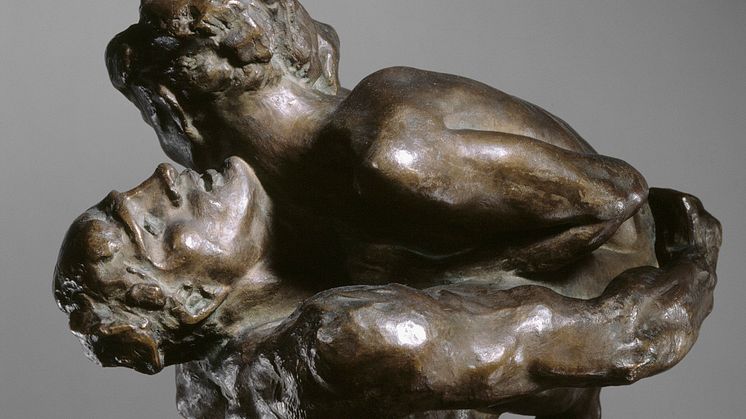
Press release -
Rodin exhibition at Nationalmuseum this autumn
This autumn, Nationalmuseum presents a major exhibition about the French sculptor Auguste Rodin, co-produced with the Musée Rodin, Paris, and the Ateneum Art Museum, Helsinki. Many of Rodin’s works have achieved iconic status. The Thinker is one of the world’s best-known sculptures. The exhibition is an opportunity to see some of the works of this legendary artist who changed the art of sculpture for all time.
Auguste Rodin (1840–1917) was an outsider who, with his bold aesthetic and innovative sculptures, changed the art of sculpture for all time. Over the years, many of his works such as The Kiss and The Thinker have achieved iconic status and have been reproduced countless times. Googling “The Thinker” yields several million hits. But when they were first exhibited in the late 19th century, the sculptures were seen either as too daring and realistic or as too incomplete and lacking in narrative context. Rodin’s focus was always on the human form, and he was able to encapsulate both physical realism and strong emotional expression in a single figure. In this respect, he can be regarded as one of the last of the classical sculptors, whereas the vividness and spontaneity of his aesthetic marked him out as progressive and innovative. What the world at large perceived as incomplete might be the embodiment of perfection to Rodin’s mind. “The artist does not see Nature as she appears to the vulgar, because his emotion reveals to him the hidden truths beneath appearances,” he once wrote.
In the early days of his career, Rodin found it hard to win public recognition. He applied unsuccessfully for admission to the École des Beaux-Arts on several occasions. Instead, he deliberately and strategically built his own brand, achieving his breakthrough relatively late in life, in his forties.
Rodin had a large studio staff to assist him with the job of producing the sculptures in marble and bronze. Many of his assistants went on to become prominent sculptors themselves, notably Camille Claudel, with whom Rodin had a long and significant personal relationship. There were several Scandinavians on staff, and others sought Rodin’s advice and opinions on their own sculpture. The exhibition therefore devotes special attention to Rodin’s Nordic connections.
The exhibition features over 50 of Rodin’s sculptures in various versions and materials, including several of his best-known works such as The Kiss, The Thinker and Je suis belle. It describes how Rodin endlessly reused and varied his motifs in his search for perfect expression. He developed an aesthetic bordering on the abstract, in which the form, the material and the artistic process are each valued in their own right. In Stockholm, the exhibition will also feature around 20 works by Scandinavian sculptors influenced by Rodin, including Carl Milles and Carl Eldh.
The exhibition is a co-production with the Musée Rodin, Paris, and the Ateneum Art Museum, Helsinki. In spring 2016 it will move on to the Ateneum. To accompany the exhibition, a lavishly illustrated catalogue including some new research will be published in English, Swedish and Finnish.
Rodin opens on 1 October 2015 in Nationalmuseum’s temporary venue at Konstakademien, Fredsgatan 12, Stockholm, and runs until 10 January 2016.
Press contacts
Linda Hinners, Curator, linda.hinners@nationalmuseum.se, +46 8 5195 4404
Hanna Tottmar, Press Officer, hanna.tottmar@nationalmuseum.se, +46 767 234632
Caption
Auguste Rodin, Je suis belle (I am Beautiful). Photo: Finlands Nationalgalleri/Antti Kuivalainen.
Categories
Nationalmuseum is Sweden’s premier museum of art and design. The collections comprise older paintings, sculpture, drawings and graphic art, and applied art and design up to the present day. The museum building is currently under renovation and scheduled to open again in 2018. In the meantime, the museum will continue its activities through collaborations both in Sweden and abroad as well as temporary exhibitions at the Royal Swedish Academy of Fine Arts, Fredsgatan 12 and Nationalmuseum Design at Kulturhuset Stadsteatern in Stockholm. Nationalmuseum collaborates with Svenska Dagbladet, FCB Fältman & Malmén and Grand Hôtel Stockholm. For more information visit www.nationalmuseum.se.

